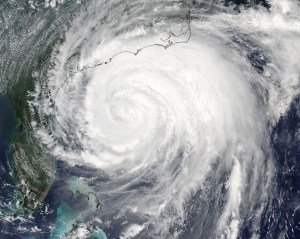By Vladimir Brezina
 I just can’t resist those satellite images!
I just can’t resist those satellite images!
Following the Blue Marble and its more recent recreations, there are now some amazing new images of the Earth out on the Internet.
These images were taken by cameras aboard Elektro-L 1, a Russian weather satellite in a geostationary orbit ~35,700 km above the Earth’s equator. Every 30 minutes, the satellite’s cameras create a 121-megapixel image at an unprecedented resolution of ~1 km of the Earth’s surface per pixel. The images were posted on the Planet Earth website by James Drake, who obtained them from the Russian Federal Space Agency and stitched them together into various time-lapse movies.
Some of the movies, such as the one above, attempt to show approximately true color. Others use infrared wavelength information to highlight vegetation in orange.
Various movies, zoomed in on different geographical regions, are available on YouTube or at the Planet Earth site, which also has interactively zoomable images that offer some sense of the true resolution of the images (the movies have much lower resolution for posting on the web) and a beautiful image gallery.
News reports with more information are here and here.
“When I see these images, I perceive the planet we live on as incredibly beautiful, interconnected and alive,” Drake said. “They show the Earth for what it is, a spinning orb of metal and rock with a thin surface layer of unimaginable complexity. The fluid water and air that cover our planet are filled with intricate self-replicating fractal patterns called life. What is happening on this planet is absolutely extraordinary!”
Slightly disconcerting, however, are the ads served up by Google with the YouTube videos:
“The End-Time is Here! 2008 was God’s last warning. 2012 is economic collapse and WWIII. www.the-end.com. Ads by Google.”
And another about UFOs…
Is there something Google knows that planetary engineers and scientists don’t?
Since these ads are personally targeted, though, watch the videos and see what Google has in store for you!









